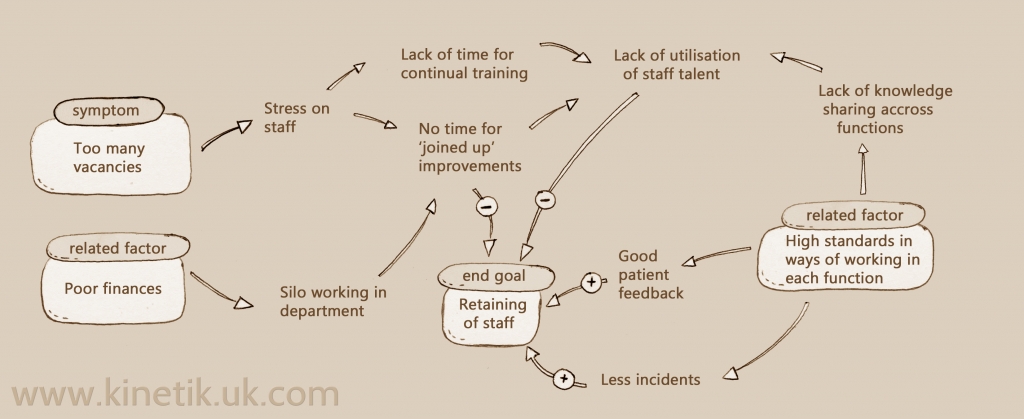
Systems Thinking for Transformational Change
Have you ever had a moment when although all the parts of your change project seem to be working well, the results are not as expected? You don’t even know where to start or what to fix, because you can’t see anything wrong with it. If so, you might need to change your perspective on the issue?
If you are involved in Transformational Change then you will realise that it is a multidimensional process. One change can cause unforeseen effects on certain, seemingly unrelated parts of an organisation. ‘Systems Thinking’ offers a holistic approach to change management, by analysing how processes and drivers of processes are interlinked as well as the importance of systems thinking during the transformation process.
“The Sum is Greater than the parts”. Aristotle, Greek Philosopher (384BC – 322BC)
Of course we know that many of the work- streams of delivery are assumed to be directly interrelated within large-scale transformations. Support functions, along with the organisation’s underlying culture and ways of working, have a deeper effect on the overall system than might be assumed at first glance. Systems thinking examines the factors in play during a transformation and discovers the connections between them. There are four key characteristics:
- In systems, many elements interact in many ways. The connections and interactions between elements are often imprecise and ambiguous.
- There is variance in behaviour, meaning that the same outcome is unlikely even when the input is the same. When working with transformational change using systems thinking, it is important to keep in mind that not everyone is the same. Hence not everyone, or every group will react the same way, when faced with the same issue.
- Systems are subject to the way people in the system direct them or make decisions. A progression from the previous characteristic, dealing with people means that others can alter the way systems work.
- The system is impacted by external factors. It is not a closed ecosystem. There could be external reasons that need to be considered.
Using these four characteristics, systems thinking allows you to see the big picture and identify problems and potential solutions. It makes use of a highly visual tool that is called a ‘systems map’ that helps you appreciate the whole. Seeing the connections while using this map, can show you where the problems occur.
For example, let’s take the scenario of a hospital that has difficulty in recruiting nurses where finances are poor, but standards and governance are good. The first thing to think about is the impact of vacancies on the end goal of the organisation, and how they are linked to other factors. Using these ideas, you can form a systems map. Once you have a map, albeit fuzzy, a discussion of cause and effect can take place.
Take the image above for example. It shows the symptom that there are too many vacancies, because there are poor finances, although the standards in ways of working in each function are high. The negative and positive factors and connections lead to the end goal, which is the retaining of the staff. Looking at this systems map, it is possible to see that staff involvement is the key factor that affects the system.
Systems thinking allows decisions to be made with the benefit of a systems map, so that unintended consequences can be reflected in the overall system. The cost of unintended consequences can be huge. At the Mid Staffordshire NHS Trust, a hospital that systematically failed in 2008, 400-1200 more patients died between 2005-2008 than was expected[1].
Various modelling tools can be used if system dynamics need more clarity. The best option, although it is not always possible, is to have ‘pilots’ or tests on the systems and study its effects. A test can identify possible ‘pinch points’ or critical relationships that affect the overall system. This should move the focus for improvement to where it is needed rather than where the symptom of failure occurs.
It is also necessary to keep in mind that the map should be ‘live’. It should be dynamic and shift according to what is happening on the ground. As the people and connections change, so does the map.
In brief, systems thinking allows you to see the problematic points within the system, and it shows you how it can be solved by visualising the connections between different points. It helps you better understand which small deviations can create a large output change.
Next time you are working on a change project, consider the joints that it has to other work in the organisation and the systematic effects of your work in the whole. It may just help you change your focus!
More information about Systems Thinking in the context of transformational change, can be found in The Art of Transformational Change by Ketan Varia.
Ketan Varia, with editorial support from Burcu Atay
[1] Report of Mid Staffordshire NHS Foundation Trust Public Enquiry, chaired by Robert Francis, (London: The Stationary Office, 2013).

